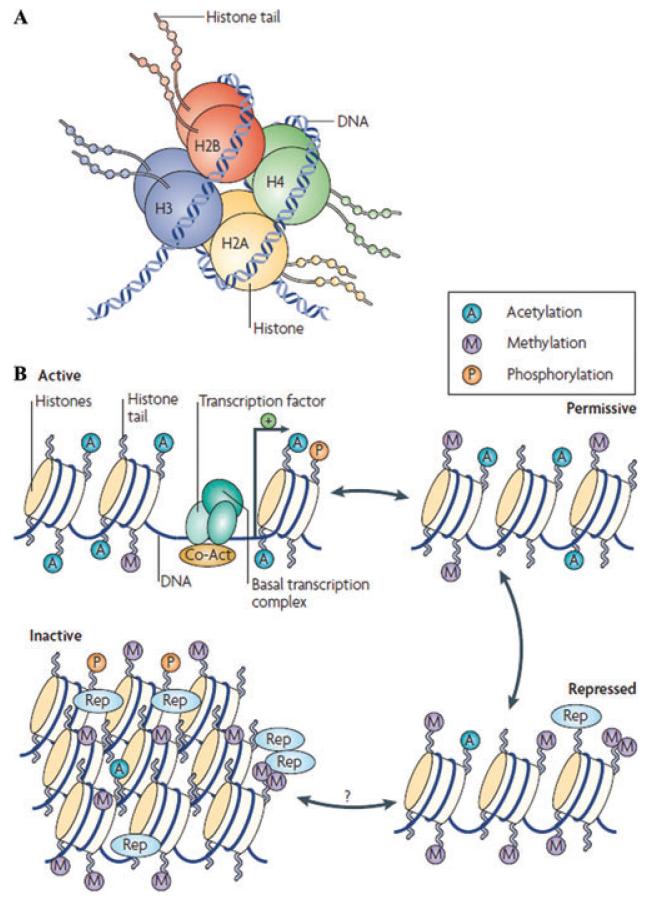Figure 2.
General scheme of chromatin remodeling. (A) DNA double helix wrapped around an octomer of histone proteins forming the unit of chromatin, the nucleosome. (B) Chromatin can be conceptualized as existing in two primary structural states: as active, or open, euchromatin in which histone acetylation opens up the nucleosome to allow binding of the basal transcriptional complex and other activators of transcription; or as inactive, or condensed, heterochromatin, where all gene activity is permanently silenced. In reality, chromatin exists in a continuum of several functional states (active, permissive, repressed, and inactivated). Enrichment of histone modifications, such as acetylation (A) and methylation (M) at histone N-terminal tails and related binding of coactivators (Co-Act) or repressors (Rep), to chromatin modulates the transcriptional state of the nucleosome.

